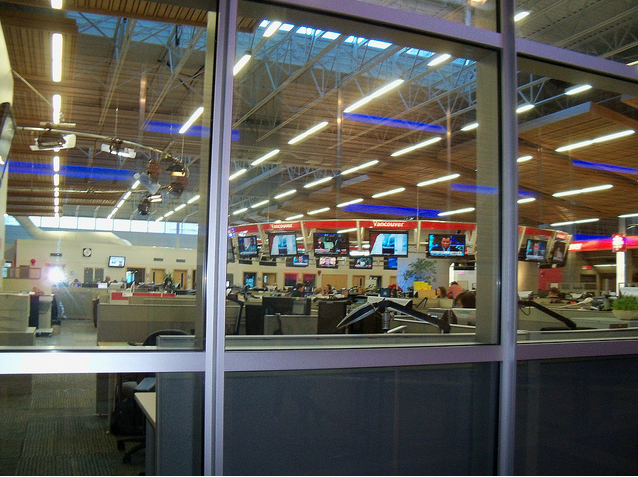
Taulbee Jackson is the president and CEO of Raidious, which helps brands create content. Follow him on Twitter @taulbee .
Brand newsrooms are supposedly the next step in the ad agency’s evolutionary process. The rallying cry is for brands and their agencies to adopt a newsroom-style operation in response to modern media habits. But the reality is that your marketing team and ad agency are not in the business of creating news. This won’t work. Here are four reasons why.
Brands are not in the content business.
Neither are ad agencies, PR firms or digital shops. More importantly, they are not in the audience development business. That is what newsrooms are about — creating audiences that can be monetized. Everything about news organizations, from culture to employee compensation, is built around moving the audience needle. If you’re building a brand newsroom to enable real-time content production instead of enabling audience development across all your owned media properties, you’re looking through the wrong end of the telescope.
You think someone should own creative.
It probably took your marketing team five years to wrest control of the website from the IT department, and PR and advertising are still fighting over who owns social media. Your team likely has at least three to five levels of approval for most marketing efforts, all of which ultimately roll up to a CMO or vp of marketing, who has the final say over all things creative — and tends to either have the ideas or control over the ideas. On the agency side, the creative director has the ideas. In a newsroom, storytelling and creativity is a decentralized, individual effort where the people telling the story are expected to research, develop and execute the story without the guidance (some would say constraints) of an overarching creative role.
You think you can judge what good content is.
Sorry, nobody on your team gets to do that anymore. That is now in your audience’s job description. No matter what you or anyone else on your team thinks, in the world of the newsroom, the ratings always make the final decisions on content quality — and digital metrics are your version of ratings. Every measurement we look at online is a measurement of content quality — not the effectiveness of the platform. You’re not measuring whether or not Facebook, email or mobile works. We know those platforms can technically accomplish the delivery of content. What we actually are measuring is the content, and your audience will tell you loud and clear what good content is based on these metrics.
You think your company is agile.
It’s not. Your company has the agility of a three-legged elephant, and it’s not your fault; agility has never been a requirement until recently. Having the nicest brand newsroom in the world doesn’t matter if governance issues cause a roadblock to real-time response. Unfortunately, the solution to this is not to cram all of the brand stakeholders in the same physical room with the art directors during the Super Bowl and wait for the lights to go out. That might work for one-off events, but it’s not a sustainable newsroom operations model — and if you do it right, you won’t need everyone in the same room.
More in Marketing

Ad Tech Briefing: Start-ups are now table stakes for the future of ad tech
Scaled ad tech companies need to maintain relationships with startups, when the sector is experiencing ongoing disruption due to AI.

Inside Kristi Argyilan’s RMN playbook: Lessons from the ‘godmother’ of retail media
Uber’s global head of advertising Kristi Argyilan says the future of retail media hinges on real-time relevance, brand differentiation, and breaking free from a one-size-fits-all playbook.

Digiday+ Research: More than half of marketers invest in TV and streaming, with an eye on impressions and branding
The majority of marketers are directing ad spend toward TV, with a focus on ads that drive impressions and branding.





